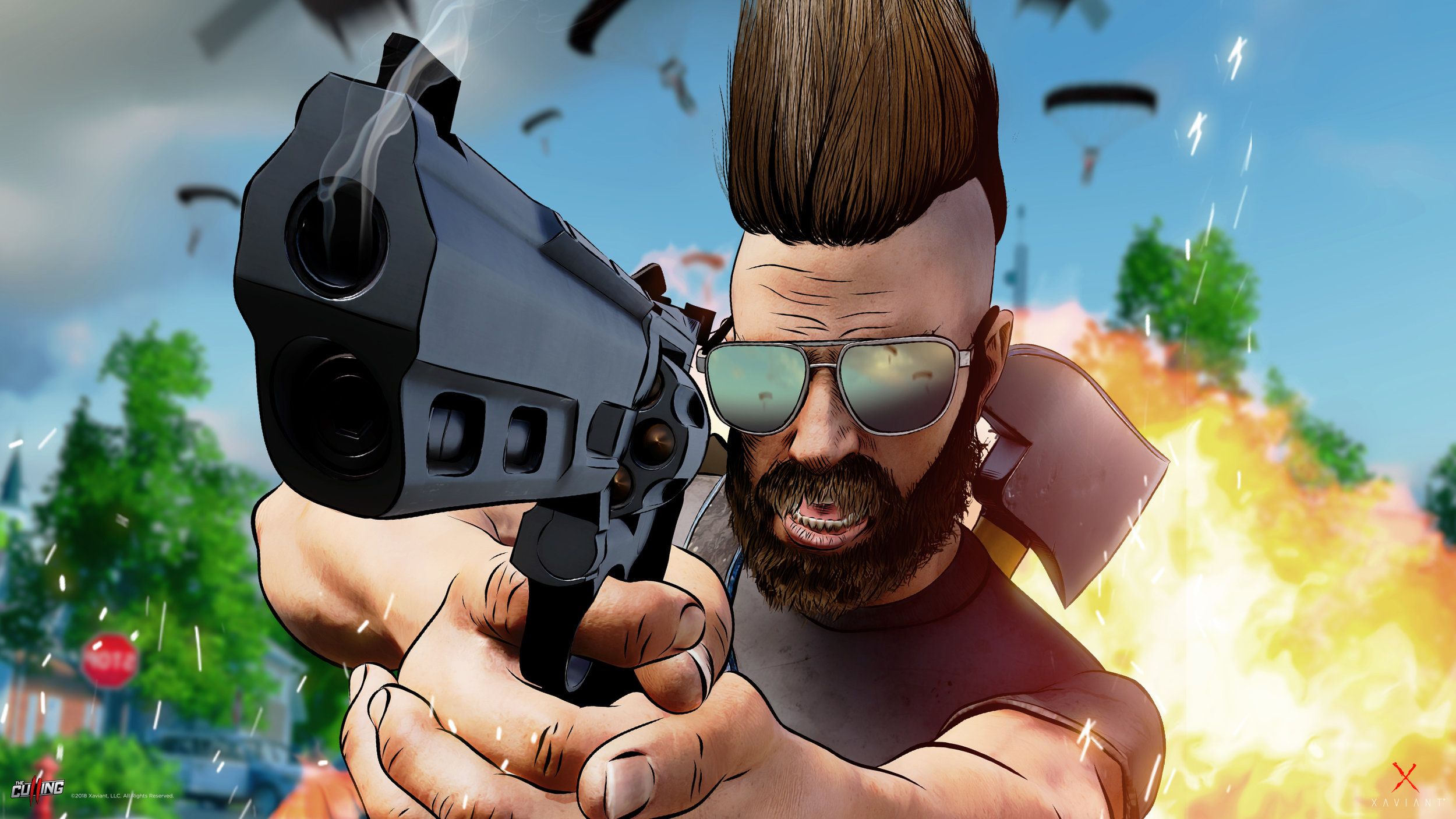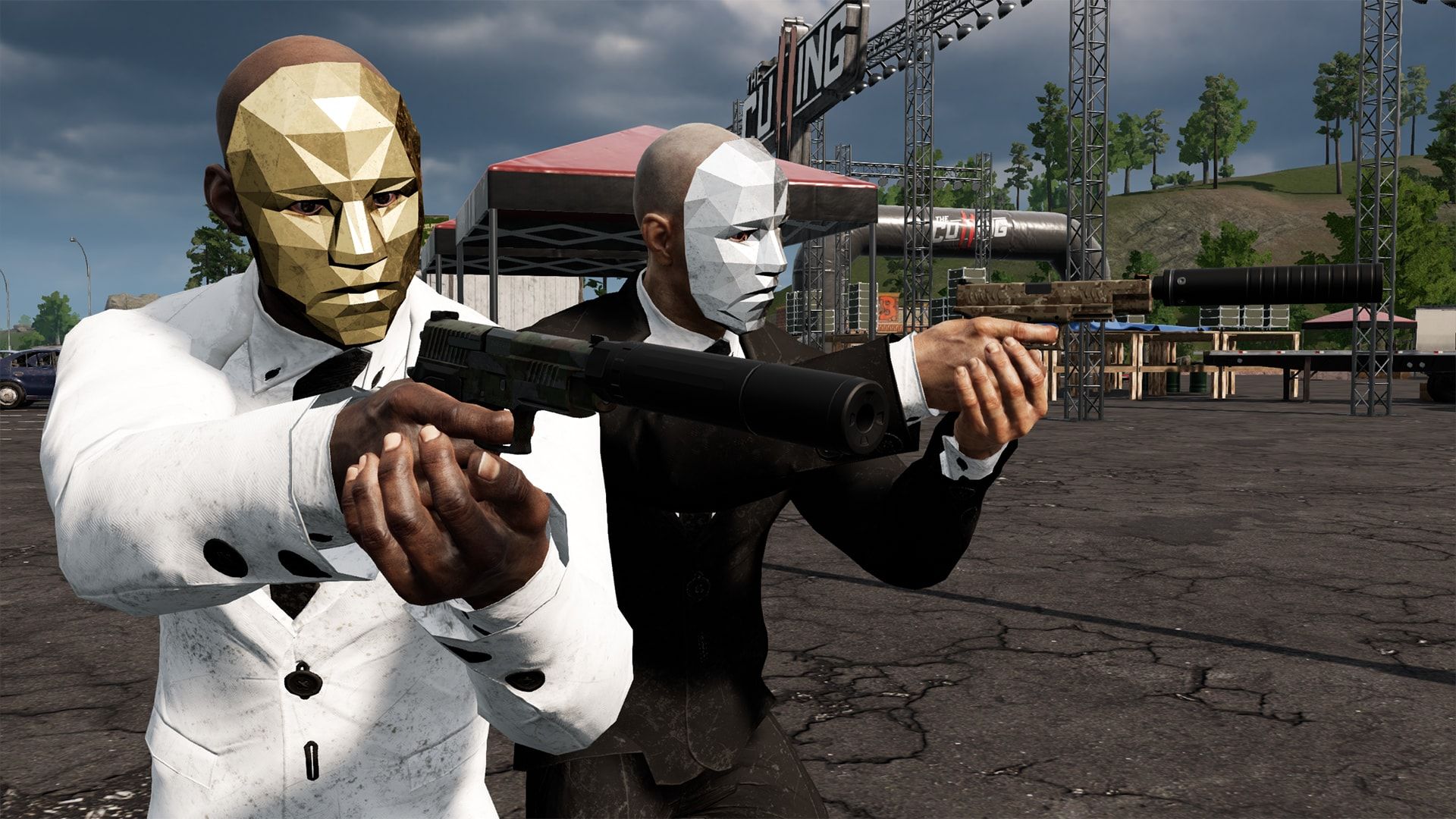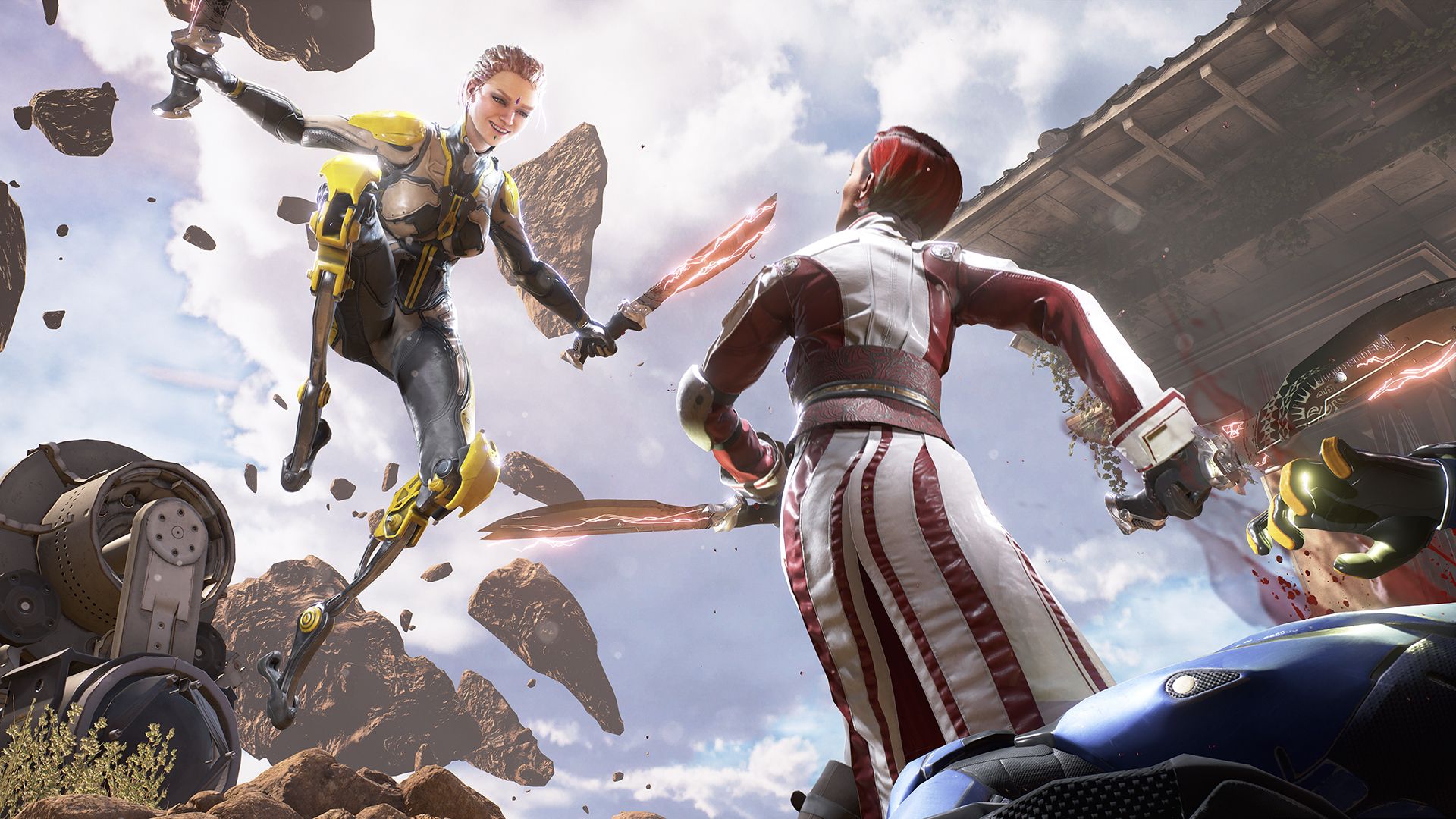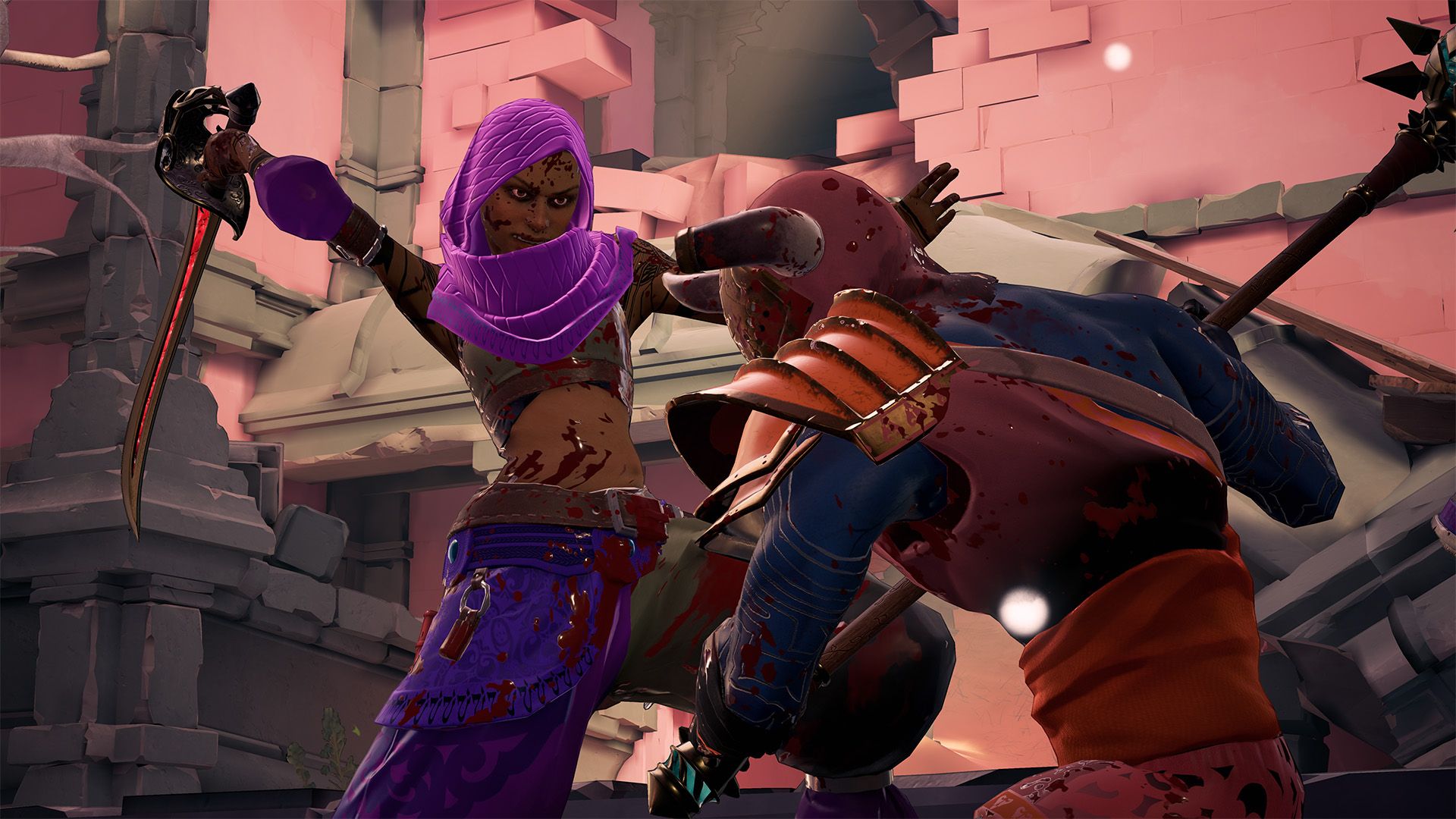The most successful games on modern platforms typically feature some sort of multiplayer component. While there is the occasional exception with titles like God of War, gaming juggernauts like Call of Duty, Overwatch, PlayerUnknown's Battlegrounds, and Fortnite show that multiplayer-focused titles, mainly shooters, have the biggest potential to blow up and have lucrative longevity to them.
This is why all AAA publishers put out multiplayer titles, and this motivation has bleed down into mid-tier and indie developers in recent years. While there are some wild success stories, this style of game can be very deadly to small studios. These types of games require consistent updates, ample server upkeep, and most importantly a player base.
Over the past couple years, several multiplayer titles have come and gone without making much of an impact, and recently playing the all-but-dead 2014 top-down multiplayer shooter Secret Ponchos on DualShockers’ weekly Community Playdate motivated me to look at four recent mid-tier to indie multiplayer game failures, see what did wrong, and hopefully shed some light on what up and coming developers can either do or avoid to ensure that their game will find some level of success.
The Culling 2 (Developer: Xaviant Games)
This is the most recent and egregious example of a botched attempt and a multiplayer-focused title by a mid-sized team at Xaviant. While The Culling was one of the first battle royale games ever, hitting early access in March 2016, but started to become irrelevant when PlayerUnknown's Battlegrounds began to take the world by storm in early 2017. This resulted in the developers quickly getting the game out of Early Access without truly listening to the community in October 2017.
Shortly thereafter, they released a "thanksgiving patch" for the game, which made a lot of radical core changes, creating even more of a rift in the community. As Xaviant's Director of Operations Josh Van Feld put it himself, the developers "changed too much too fast" and ended up not "seeing a path forward" with The Culling. The developers truly thought that their best option would be to cut ties to that game and quickly work on a sequel more in line with the standard battle royale setup. Low and behold, in June 2018 The Culling 2 was teased before getting a surprise announcement and release in July.
From the get go, things weren't right with The Culling 2. From a gameplay standpoint, it was much closer to PUBG than anything the original offered outside of a narrator, and required tons of players to be entertaining in the slightest. The game was also clearly unfinished and not polished, looking and playing very sub-par as a result of a six-month development cycle. It still cost $20, though. Players were quick to notice, bashing and abandoning the game almost immediately. The Culling 2 peaked at 249 players on PC at launch, and soon dropped to under 10 within two days.
YouTubers were quick to make a mockery of the game and its low player count, and it was quickly considered one of the worst games in recent memory. This situation is impossible to rebound from, so Xaviant Games made the right decision and went back to work on The Culling. While the original game still hasn't been giving great numbers, The Culling is also a game that requires a much smaller player count that The Culling 2 did. The Culling 2 went as quickly as it came, and will now just be remembered as an example of what not to do with your multiplayer game.
What we can learn: Marketing, communication with the community, a decent player count are all integral to success. Xavient's disconnect from the community was apparent from the final days of The Culling, resulting in the developers wasting months on a game no one wanted. Marketing the game so close to launch also limited its visibility in the fallout of E3, so no one was motivated to play it at launch. Coupled with a high price and being a mediocre product in general, The Culling 2 basically had no players out of the gate.
Battle royale is a massive risk for any small developer due to the massive player count required, and unless you can structure the game in a way that gives those playing alone something to do, it is likely that your game will quickly become useless if it doesn't catch on. Getting people to notice your game will also be one of the hardest parts of the job, but it is an integral part for multiplayer games, especially Battle Royale.
LawBreakers (Developer: Boss Key Productions)
LawBreakers seemed poised for success, but died surprisingly quickly. Many were excited to see what Cliff Bleszinski, known for Unreal Tournament and Gears of War, had in store next. LawBreakers was first teased all the way back in 2015, and finally launched after various alphas and a couple betas in August 2017. Unfortunately, it did not make much of splash, While it reach a peak of 7, 482 players on PC, most were expecting the game to have a much larger launch due to the pedigree of those on the development team and backing of publisher Nexon.
LawBreakers was actually quite fun at its core, implementing exciting gravity mechanics and giving players the ability to do some unique things like shoot behind their back. Sadly, it felt much more derivative of team-based shooters like Overwatch in most areas. Overwatch has remained very relevant in the two years since launch and cementing itself as the quintessential team shooter, and LawBreakers just couldn't get out of its shadow.
By the time LawBreakers came along, they were competing with very stiff competition in a genre that was already flooded with other, less notable small developers trying to get a slice of that team-based shooter market. It’s more mature tone and visual design also didn't catch on as much as Overwatch’s easily digestible and friendly character designs. Team-based shooters were also on the way out at the time, as PlayerUnknown’s Battlegrounds was taking over multiplayer gaming, with Fortnite: Battle Royale on the Horizon.
Boss Key Productions and Nexon did try to support the game after launch, but the stigma that LawBreakers was a failure had already set in. The player base quickly diminished, and Boss Key Productions finally ended support in January. In a last-ditch effort to keep the company afloat launched, they released Radical Heights, a battle royale game in "XTREME Early Access." It was clear that this game was super derivative and barely developed, so it didn't catch either. Boss Key Production sadly shut down, never achieving the potential many saw in them.
What we can learn: Originality and timing are essential, and a multiplayer game that bombs can sink your studio. Even though LawBreakers had its own merits, it felt too derivative of Overwatch at a glance and didn't have an appealing enough style to draw people in. It also released way too late to be relevant, despite a strong marketing campaign. Developers planning to release a multiplayer game have to make sure it's something people would want to play and is coming at the time when they want to play it. Multiplayer titles are also costly endeavors, and a botched release can ruin a company that has good ideas, just like it did with Boss Key Productions.
Mirage: Arcane Warfare (Developer: Torn Banner Studios)
Canadian developer Torn Banner Studios found a surprising amount of success with Chivalry: Medieval Warfare back in 2012, and many were wondering if the smaller studio would have another success on their hands with Mirage: Arcane Warfare. While I liked the game, things were pretty sour from launch. The game actually had a highly successful beta, but due to both Steam and sever-related issues in the game's first week, that strong community never really carried over.
While this just seems like a minor and recoverable inconvenience, it also meant that Mirage: Arcane Warfare stumbled right out of the gate. Torn Banner Studios also had troubles communicating with their community, and the marketing for the game was lackluster. The $30 price tag was considered fairly steep to entice tons of new players at a glance, and a lot of beta issues moved on after the servers issues. The game was considered fairly dead shortly after launch, and as is the case with the aforementioned titles, this sealed its fate.
To Torn Banner Studios' credit, they didn't give up on Mirage: Arcane Warfare and continued to support the game with updates for about the year. Several free weekends were held to entice new players, and bots were added to keep games full, but this just ended up being too little too late, so most players just stuck with Chivalry. The final nail in the coffin for Mirage: Arcane Warfare though was the General Data Protection Regulation privacy law in the European Union.
Adjusting for these laws would be a relatively costly endeavor, and keeping this fairly unsuccessful game running wasn't worth the cost for the smaller Torn Banner Studios team. Mirage: Arcane Warfare still lives on for some in a few player-hosted servers, but is no longer available on Steam for general audiences.
What we can learn: Prepare for the unexpected, communicate clearly to your community, and price your product wisely. Mirage: Arcane Warfare was hurt by problems outside of the game's control right out of the gate, and the developers didn't handle these issues adequately. Keeping a game with such a small player base alive is also costly, and something like the GDPR can come along and kill the game's servers unexpectedly. Pricing at launch is also vital. While games are expensive and the developers felt the game was worth $30, the high price will turn many players off, mainly when cheaper and more lively alternatives exist from more well-known companies.
Laser League (Developer: Roll7, now 505 Games)
I was very impressed with Roll7's Laser League from the first time I played it at E3 2017. This fast-paced multiplayer title centered around lasers looked and played great, and the developers even thought it could have some post-launch eSports potential when I talked with them during E3. While Laser League seemed like it could be the next Rocket League, it ended up disappointing. While the game is still running and could have a future, it will only be an uphill battle from here.
While Roll7, who were typically known for sidescrolling games, worked on Laser League for over three years with the help of publisher 505 Games, they still ran into quite a few problems around launch. Laser League's fast pace required high player-counts and minimal latency, and according to 505's Senior Community Manager, these were problems Roll7 had trouble dealing with. Cross-play was never a possibility for the small team, who also had to separate players by region to keep ping up. This ultimately segregated the community way too much, and hurt the game in the long run.
A complicated and somewhat unsuccessful game of this size also took a toll on its developers. While they didn't shut down like Boss Key, Roll7 is no longer working on Laser League and is “taking some time to reflect and re-energize." Development duties have been handed off to 505 Games, who is hoping to jump-start the game and its community with special promotions and adding helpful features like cross-play. That being said, it may be too late to save the game, even if it is incredible at its core.
What we can learn: Multiplayer games are complicated for developers, and your game could still do poorly even if it's amazing. Roll7 was inexperienced, resulting in a weak launch that snowballed into more significant issues after release for the small team. Laser League is a great game and may have new life breathed into it now that 505 Games is in charge, but as of right now, things seem pretty dire for the indie game.
Rethinking Multiplayer Development
There are tons of games we could count throughout the last generation of gaming. Whether they be older titles like Loadout and Dead Star, or more recently shuttered ones like Just Survive, there is an inherit risk when developing a multiplayer game; even worse, these problems are exacerbated for smaller developer who have to deal with the Fortnite, Overwatch, and Call of Duty's of the world. That being said, the most significant problems that resulted in low player counts and failure are pricing and lack of communication.
All four titles I discussed could be considered overpriced. While it may not be consumer-friendly of even plausible cost-wise for small developers to make their game's free-to-play, they do have to take into account that insanely popular titles like Fortnite will always have that over them. Developers should stick to their guns and be confident in their product, and if they think their game is worth what they are charging to keep the game running, they need to prove it to consumers.
That comes back to communication. If marketing is weak or the developers go dark on their players, there are minimal chances of that multiplayer title being successful. Platforms like Early Access and social media sites like Twitter mean that gamers can be more involved in the development process than ever, and this is an often overlooked part of game development that smaller studios need to embrace. In addition to being free, one of the reasons Fortnite is so successful is because Epic Games is consistently communicating with players and updating the game, so people want to return.
Every game is different, and the gaming market can vary wildly from month to month, but there are still valuable lessons small developers who want to break into multiplayer games can learn from the titles above. Feel free to point out any dead multiplayer titles I may have missed in the comments below and discuss what you believe caused these games to flop.





